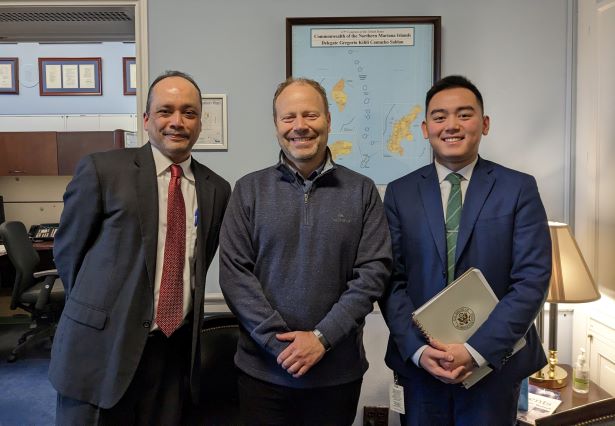On a busy week for Broadband in Washington DC, Pacific Broadband and Digital Equity (PBDE) Founder Peter Dresslar visited the Congressional delegations from the Commonwealth of the Northern Marianas Islands and American Samoa and briefed the Congressional delegation from Guam.
The briefings focused on issues where the territories have a particular interest in working together to achieve visibility and policy results with their federal agency counterparts. One of the most topical of these areas is the Federal Communications Commission’s (FCC) Broadband Map and its particular deficiencies in covering the region. The impact of these deficiencies could be quite pronounced, since the Map is a central determining factor for the Broadband Equity, Access, and Deployment (BEAD) funding allocations to be made later in 2023. Designated as the administrator of BEAD by the Bipartisan Infrastructure Law (BIL,) the National Telecommunications and Information Agency (NTIA) has major policy determinations to make due to a lack of clarity in the Law regarding the territories (Pacific and United States Virgin Islands included.) We discussed core mapping issues where the territorial delegations could maintain focus.
Dresslar also briefed the delegations on matter of the FCC’s Affordable Connectivity Program (ACP) and the High-Cost benefit that is made available to indigenous peoples throughout America. In an apparent oversight, BIL fails to extend these enhanced benefits to the Pacific territories despite their clear and extensive indigenous heritage. Each territory’s Broadband team has been pushing to expand this subsidy through engagement with FCC and NTIA, and the Congressional delegations pledged to make their own connections on the issue.
Finally, the NTIA’s appropriate role in monitoring the submarine fiber optic networks serving the Pacific was a topic for future discussion. These undersea cables supply effectively all of the fixed internet connectivity to the Pacific territories, USVI and Puerto Rico, and Hawaii; and yet there is very little clarity on the role of the agency regarding trans-oceanic cables. Clearly the success of the NTIA’s infrastructure investment of several hundreds of millions of dollars will hinge on the proper leveraging and enhancement of the undersea cable market, and we urged the congressional delegations to enquire with the NTIA and the Biden administration to ensure that this responsibility is being met.

